#toyota electric vehicles
Explore tagged Tumblr posts
Text
youtube
Toyota New Engine Will Destroy The Entire EV Industry | Caractics
This new engine from Toyota is set to revolutionize the EV industry. With improved performance and efficiency, Toyota's new engine is expected to revolutionize the way EVs are used and experienced. Get ready to experience a whole new level of driving. Watch the video Toyota's new engine will destroy the Entire EV Industry
#toyota new engine#electronic vehicle#electronic car#electronic vehicles#car electronic#toyota vehicle#toyota electric car#toyota electric#toyota plug in hybrid#toyota electric vehicles#toyota new electric car#toyota evs#toyota hybrid electric car#toyota electric cars 2023#toyota all electric car#toyota ev car#toyota new engine technology#ev industry#Youtube
0 notes
Text
youtube
Toyota New Engine Will Destroy The Entire EV Industry | Caractics
🌟This new engine from Toyota is set to revolutionize the EV industry. With improved performance and efficiency, Toyota's new engine is expected to revolutionize the way EVs are used and experienced. Get ready to experience a whole new level of driving. Watch the video Toyota's new engine will destroy the Entire EV Industry
#toyota new engine#electronic vehicle#electronic car#electronic vehicles#car electronic#toyota vehicle#toyota electric car#toyota electric#toyota plug in hybrid#toyota electric vehicles#toyota new electric car#toyota evs#toyota hybrid electric car#toyota electric cars 2023#toyota all electric car#toyota ev car#toyota new engine technology#toyota new engine will destroy the entire ev industry#ev industry#caractics#Youtube
0 notes
Video
youtube



Toyota Big Red Ute, 2024. Australian children’s music group The Wiggles have teamed up with Toyota Australia to create a custom stage truck. Styled to resemble a FJ Land Cruiser, the BRU is electrically powered and limited to 12km/h for safe on-stage use. There’s even a song that goes with it though they use a Hilux in the video
#youtube#Toyota#Toyota Big Red Ute#Big Red Ute#The Wiggles#2024#stage truck#replica#FJ Land Cruiser#video#EV#electric vehicle#country music#Toyota Australia
97 notes
·
View notes
Text

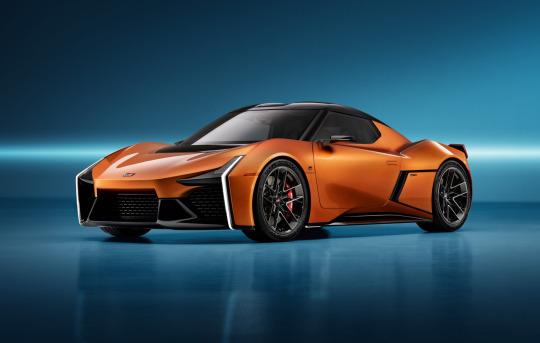




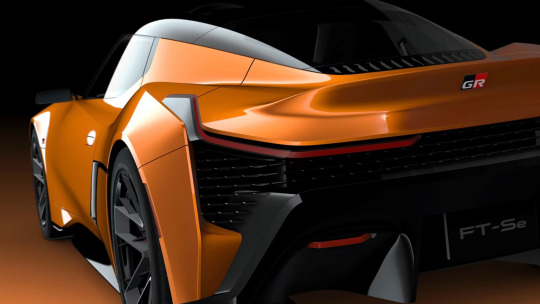



Toyota FT-Se (“Future Toyota Sports electric”)
#art#design#sportcars#sportcar#supercars#supercar#e-cars#e-car#luxurycars#luxurycar#toyota#conceptcar#carconcept#FT-se#toyotaFT-se#electric vehicles#electric cars
93 notes
·
View notes
Text

10 Different Types of Trucks and Their Uses
1. Tipper Truck:
A tipper truck, or dump truck, has an open-box bed hinged at the rear, capable of tipping to unload materials like sand, gravel, or debris. It's widely used in construction and mining.
2. Mini Truck:
Mini trucks are small, lightweight vehicles that transport goods over short distances. They are economical and commonly used for intra-city deliveries and light-duty applications.
3. Concrete Truck:
Also known as a cement mixer, this truck has a rotating drum to mix and transport concrete to construction sites. By continuously turning during transit, it ensures the concrete remains usable.
4. Pickup Truck:
A pickup truck features an enclosed cabin, an open cargo area with low sides, and a tailgate. It's versatile for personal transport, light commercial deliveries, and towing.
5. Box Truck:
Also called a cube truck or van, a box truck has an enclosed cargo space separated from the cabin. It's ideal for moving goods, furniture, and appliances.
6. Tow Truck:
Tow trucks are designed to transport vehicles, often used for towing broken-down, damaged, or illegally parked vehicles. They may use flatbeds, hooks, or wheel-lift mechanisms.
7. Dump Truck:
Often synonymous with a tipper truck, dump trucks have a robust design for heavy-duty operations. They're used to transport and dump loose materials like soil or rubble.
8. Fire Truck:
Fire trucks are emergency vehicles equipped with firefighting apparatus, water pumps, hoses, and ladders. Some also carry rescue equipment for emergencies.
9. Garbage Truck:
Also known as a refuse truck, it collects and transports waste to disposal sites. Some models compact the garbage to maximize capacity.
10. Tanker Truck:
Tanker trucks have large cylindrical tanks to transport liquids such as fuel, chemicals, or water. They are vital for industries requiring bulk liquid transportation.
#automotive#automobile#cars#suv#electric vehicles#toyota#truck#trucking logistics#pickup#chevy#chevrolet#truckinglife#monster trucks#variety
11 notes
·
View notes
Note
hm deduction from me but i think jack doesn't fly a lot … he mostly drives (to MA, Chicago, DC, Philadelphia)...
Scared of flying? Or is he trying to prove that Toyota is the best car in the world? or both? ✊😆😑

#jack schlossberg#jfk grandson#toyota#pickup#tesla cars#anti elon musk#elon musk#electric vehicles#gasoline#carbon monoxide#air pollution#washington dc#massachusetts#chicago#philly#philadelphia#enviromentalism#environment
11 notes
·
View notes
Text
January saw plugin EVs take 96.9% share in Norway, up from 93.9% year on year. BEVs alone took almost 96% of the market. Overall auto volume was strongly up on seasonal norms, at 9,343 units, up 82% YoY. The Toyota BZ4X was the best-seller.

#Norway#ev sales#ev market#ev adoption#affordable EV#competition#Toyota BZ4X#electric car#electric vehicle#energy independence#demise of big oil
2 notes
·
View notes
Text
MegaWeb 🚙 Theme Park of Cars



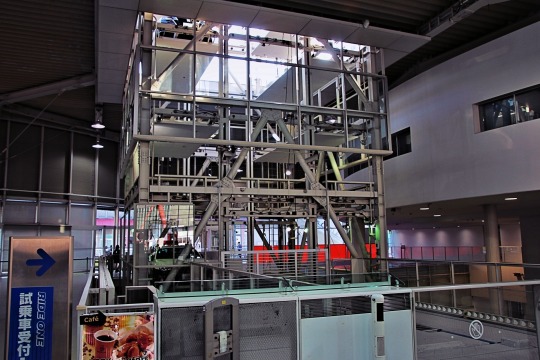

#Mega Web#Megaweb#History Garage#Mega web Toyota City Showcase#Cars#Car Show#Auto Show#concept car#Electric Vehicles#Palette Town#Odaiba#Tokyo#Japan
8 notes
·
View notes
Text
can u drive ? and do you have your first car? we can meet you needs , because we have cost-effective used and new car , can help u get the first vehicle easily.
2 notes
·
View notes
Text
The best cars I've ever own
In honor of my brother Randy's 60th birthday, here's a list of the best cars I've ever owned. It features vehicles from Honda, Toyota, and Chevrolet.
My brother is turning 60 next month. Cars have always been an important part of his life. When we were kids, we spent every September visiting the car dealers on Reseda Boulevard collecting brochures for all the new year’s models. He turned his passion into a career. His website and YouTube channel is named Victory & Reseda after the neighborhood where we grew up and the gas stations on the…

View On WordPress
2 notes
·
View notes
Photo

In Case You Missed It: Toyota Land Cruiser Se, EPU, Land Hopper, JUU, Space Mobility, And NEO Steer
In case you missed it.
Follow us for more Tech Culture and Lifestyle Stuff.
3 notes
·
View notes
Text
The Future of Electric Vehicles

#electric vehicles#electric cars#electric#lexus#motor#toyota#ford#touhou#harrison ford#tom ford#chrysler#american muscle#muscle car
2 notes
·
View notes
Text
Hydrogen Is the Future—or a Complete Mirage!
The green-hydrogen industry is a case study in the potential—for better and worse—of our new economic era.
— July 14, 2023 | Foreign Policy | By Adam Tooze

An employee of Air Liquide in front of an electrolyzer at the company's future hydrogen production facility of renewable hydrogen in Oberhausen, Germany, on May 2, 2023. Ina Fassbender/ AFP Via Getty Images
With the vast majority of the world’s governments committed to decarbonizing their economies in the next two generations, we are embarked on a voyage into the unknown. What was once an argument over carbon pricing and emissions trading has turned into an industrial policy race. Along the way there will be resistance and denial. There will also be breakthroughs and unexpected wins. The cost of solar and wind power has fallen spectacularly in the last 20 years. Battery-powered electric vehicles (EVs) have moved from fantasy to ubiquitous reality.
But alongside outright opposition and clear wins, we will also have to contend with situations that are murkier, with wishful thinking and motivated reasoning. As we search for technical solutions to the puzzle of decarbonization, we must beware the mirages of the energy transition.
On a desert trek a mirage can be fatal. Walk too far in the wrong direction, and there may be no way back. You succumb to exhaustion before you can find real water. On the other hand, if you don’t head toward what looks like an oasis, you cannot be sure that you will find another one in time.
Right now, we face a similar dilemma, a dilemma of huge proportions not with regard to H2O but one of its components, H2—hydrogen. Is hydrogen a key part of the world’s energy future or a dangerous fata morgana? It is a question on which tens of trillions of dollars in investment may end up hinging. And scale matters.
For decades, economists warned of the dangers of trying through industrial policy to pick winners. The risk is not just that you might fail, but that in doing so you incur costs. You commit real resources that foreclose other options. The lesson was once that we should leave it to the market. But that was a recipe for a less urgent time. The climate crisis gives us no time. We cannot avoid the challenge of choosing our energy future. As Chuck Sabel and David Victor argue in their important new book Fixing the Climate: Strategies for an Uncertain World, it is through local partnership and experimentation that we are most likely to find answers to these technical dilemmas. But, as the case of hydrogen demonstrates, we must beware the efforts of powerful vested interests to use radical technological visions to channel us toward what are in fact conservative and ruinously expensive options.

A green hydrogen plant built by Spanish company Iberdrola in Puertollano, Spain, on April 18, 2023. Valentine Bontemps/AFP Via Getty Images
In the energy future there are certain elements that seem clear. Electricity is going to play a much bigger role than ever before in our energy mix. But some very knotty problems remain. Can electricity suffice? How do you unleash the chemical reactions necessary to produce essential building blocks of modern life like fertilizer and cement without employing hydrocarbons and applying great heat? To smelt the 1.8 billion tons of steel we use every year, you need temperatures of almost 2,000 degrees Celsius. Can we get there without combustion? How do you power aircraft flying thousands of miles, tens of thousands of feet in the air? How do you propel giant container ships around the world? Electric motors and batteries can hardly suffice.
Hydrogen recommends itself as a solution because it burns very hot. And when it does, it releases only water. We know how to make hydrogen by running electric current through water. And we know how to generate electricity cleanly. Green hydrogen thus seems easily within reach. Alternatively, if hydrogen is manufactured using natural gas rather than electrolysis, the industrial facilities can be adapted to allow immediate, at-source CO2 capture. This kind of hydrogen is known as blue hydrogen.
Following this engineering logic, H2 is presented by its advocates as a Swiss army knife of the energy transition, a versatile adjunct to the basic strategy of electrifying everything. The question is whether H2 solutions, though they may be technically viable, make any sense from the point of view of the broader strategy of energy transition, or whether they might in fact be an expensive wrong turn.
Using hydrogen as an energy store is hugely inefficient. With current technology producing hydrogen from water by way of electrolysis consumes vastly more energy than will be stored and ultimately released by burning the hydrogen. Why not use the same electricity to generate the heat or drive a motor directly? The necessary electrolysis equipment is expensive. And though hydrogen may burn cleanly, as a fuel it is inconvenient because of its corrosive properties, its low energy per unit of volume, and its tendency to explode. Storing and moving hydrogen around will require huge investment in shipping facilities, pipelines, filling stations, or facilities to convert hydrogen into the more stable form of ammonia.
The kind of schemes pushed by hydrogen’s lobbyists foresee annual consumption rising by 2050 to more than 600 million tons per annum, compared to 100 million tons today. This would consume a huge share of green electricity production. In a scenario favored by the Hydrogen Council, of the United States’ 2,900 gigawatts of renewable energy production, 650 gigawatts would be consumed by hydrogen electrolysis. That is almost three times the total capacity of renewable power installed today.
The costs will be gigantic. The cost for a hydrogen build-out over coming decades could run into the tens of trillions of dollars. Added to which, to work as a system, the investment in hydrogen production, transport, and consumption will have to be undertaken simultaneously.
Little wonder, perhaps, that though the vision of the “hydrogen economy” as an integrated economic and technical system has been around for half a century, we have precious little actual experience with hydrogen fuel. Indeed, there is an entire cottage industry of hydrogen skeptics. The most vocal of these is Michael Liebreich, whose consultancy has popularized the so-called hydrogen ladder, designed to highlight how unrealistic many of them are. If one follows the Liebreich analysis, the vast majority of proposed hydrogen uses in transport and industrial heating are, in fact, unrealistic due to their sheer inefficiency. In each case there is an obvious alternative, most of them including the direct application of electricity.
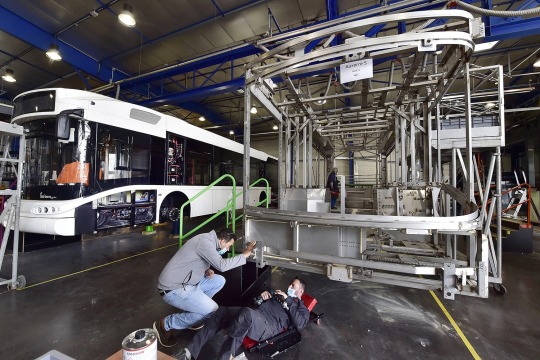
Technicians work on the construction of a hydrogen bus at a plant in Albi, France, on March 4, 2021. Georges Gobet/AFP Via Getty Images
Nevertheless, in the last six years a huge coalition of national governments and industrial interests has assembled around the promise of a hydrogen-based economy.
The Hydrogen Council boasts corporate sponsors ranging from Airbus and Aramco to BMW, Daimler Truck, Honda, Toyota and Hyundai, Siemens, Shell, and Microsoft. The national governments of Japan, South Korea, the EU, the U.K., the U.S., and China all have hydrogen strategies. There are new project announcements regularly. Experimental shipments of ammonia have docked in Japan. The EU is planning an elaborate network of pipelines, known as the hydrogen backbone. All told, the Hydrogen Council counts $320 billion in hydrogen projects announced around the world.
Given the fact that many new uses of hydrogen are untested, and given the skepticism among many influential energy economists and engineers, it is reasonable to ask what motivates this wave of commitments to the hydrogen vision.
In technological terms, hydrogen may represent a shimmering image of possibility on a distant horizon, but in political economy terms, it has a more immediate role. It is a route through which existing fossil fuel interests can imagine a place for themselves in the new energy future. The presence of oil majors and energy companies in the ranks of the Hydrogen Council is not coincidental. Hydrogen enables natural gas suppliers to imagine that they can transition their facilities to green fuels. Makers of combustion engines and gas turbines can conceive of burning hydrogen instead. Storing hydrogen or ammonia like gas or oil promises a solution to the issues of intermittency in renewable power generation and may extend the life of gas turbine power stations. For governments around the world, a more familiar technology than one largely based on solar panels, windmills, and batteries is a way of calming nerves about the transformation they have notionally signed up for.
Looking at several key geographies in which hydrogen projects are currently being discussed offers a compound psychological portrait of the common moment of global uncertainty.

A worker at the Fukushima Hydrogen Energy Research Field, a test facility that produces hydrogen from renewable energy, in Fukushima, Japan, on Feb. 15, 2023. Richard A. Brooks/AFP Via Getty Images
The first country to formulate a national hydrogen strategy was Japan. Japan has long pioneered exotic energy solutions. Since undersea pipelines to Japan are impractical, it was Japanese demand that gave life to the seaborne market for liquefied natural gas (LNG). What motivated the hydrogen turn in 2017 was a combination of post-Fukushima shock, perennial anxiety about energy security, and a long-standing commitment to hydrogen by key Japanese car manufacturers. Though Toyota, the world’s no. 1 car producer, pioneered the hybrid in the form of the ubiquitous Prius, it has been slow to commit to full electric. The same is true for the other East Asian car producers—Honda, Nissan, and South Korea’s Hyundai. In the face of fierce competition from cheap Chinese electric vehicles, they embrace a government commitment to hydrogen, which in the view of many experts concentrates on precisely the wrong areas i.e. transport and electricity generation, rather than industrial applications.
The prospect of a substantial East Asian import demand for hydrogen encourages the economists at the Hydrogen Council to imagine a global trade in hydrogen that essentially mirrors the existing oil and gas markets. These have historically centered on flows of hydrocarbons from key producing regions such as North Africa, the Middle East, and North America to importers in Europe and Asia. Fracked natural gas converted into LNG is following this same route. And it seems possible that hydrogen and ammonia derived from hydrogen may do the same.
CF Industries, the United States’ largest producer of ammonia, has finalized a deal to ship blue ammonia to Japan’s largest power utility for use alongside oil and gas in power generation. The CO2 storage that makes the ammonia blue rather than gray has been contracted between CF Industries and U.S. oil giant Exxon. A highly defensive strategy in Japan thus serves to provide a market for a conservative vision of the energy transition in the United Sates as well. Meanwhile, Saudi Aramco, by far the world’s largest oil company, is touting shipments of blue ammonia, which it hopes to deliver to Japan or East Asia. Though the cost in terms of energy content is the equivalent of around $250 per barrel of oil, Aramco hopes to ship 11 million tons of blue ammonia to world markets by 2030.
To get through the current gas crisis, EU nations have concluded LNG deals with both the Gulf states and the United States. Beyond LNG, it is also fully committed to the hydrogen bandwagon. And again, this follows a defensive logic. The aim is to use green or blue hydrogen or ammonia to find a new niche for European heavy industry, which is otherwise at risk of being entirely knocked out of world markets by high energy prices and Europe’s carbon levy.
The European steel industry today accounts for less than ten percent of global production. It is a leader in green innovation. And the world will need technological first-movers to shake up the fossil-fuel dependent incumbents, notably in China. But whether this justifies Europe’s enormous commitment to hydrogen is another question. It seems motivated more by the desire to hold up the process of deindustrialization and worries about working-class voters drifting into the arms of populists, than by a forward looking strategic calculus.
In the Netherlands, regions that have hitherto served as hubs for global natural gas trading are now competing for designation as Europe’s “hydrogen valley.” In June, German Chancellor Olaf Scholz and Italian Prime Minister Giorgia Meloni inked the contract on the SoutH2 Corridor, a pipeline that will carry H2 up the Italian peninsula to Austria and southern Germany. Meanwhile, France has pushed Spain into agreeing to a subsea hydrogen connection rather than a natural gas pipeline over the Pyrenees. Spain and Portugal have ample LNG terminal capacity. But Spain’s solar and wind potential also make it Europe’s natural site for green hydrogen production and a “green hydrogen” pipe, regardless of its eventual uses, in the words of one commentator looks “less pharaonic and fossil-filled” than the original natural gas proposal.
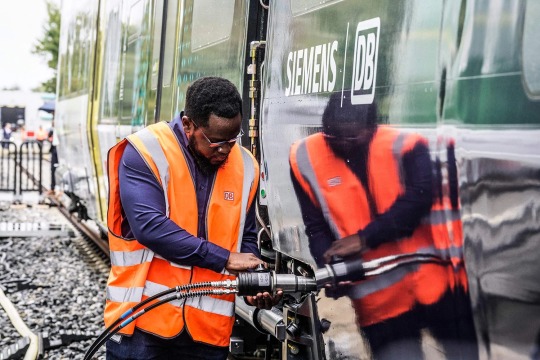
A hydrogen-powered train is refilled by a mobile hydrogen filling station at the Siemens test site in Wegberg, Germany, on Sept. 9, 2022. Bernd/AFP Via Getty Images
How much hydrogen will actually be produced in Europe remains an open question. Proximity to the point of consumption and the low capital costs of investment in Europe speak in favor of local production. But one of the reasons that hydrogen projects appeal to European strategists is that they offer a new vision of European-African cooperation. Given demographic trends and migration pressure, Europe desperately needs to believe that it has a promising African strategy. Africa’s potential for renewable electricity generation is spectacular. Germany has recently entered into a hydrogen partnership with Namibia. But this raises new questions.
First and foremost, where will a largely desert country source the water for electrolysis? Secondly, will Namibia export only hydrogen, ammonia, or some of the industrial products made with the green inputs? It would be advantageous for Namibia to develop a heavy-chemicals and iron-smelting industry. But from Germany’s point of view, that might well defeat the object, which is precisely to provide affordable green energy with which to keep industrial jobs in Europe.
A variety of conservative motives thus converge in the hydrogen coalition. Most explicit of all is the case of post-Brexit Britain. Once a leader in the exit from coal, enabled by a “dash for gas” and offshore wind, the U.K. has recently hit an impasse. Hard-to-abate sectors like household heating, which in the U.K. is heavily dependent on natural gas, require massive investments in electrification, notably in heat pumps. These are expensive. In the United Kingdom, the beleaguered Tory government, which has presided over a decade of stagnating real incomes, is considering as an alternative the widespread introduction of hydrogen for domestic heating. Among energy experts this idea is widely regarded as an impractical boondoggle for the gas industry that defers the eventual and inevitable electrification at the expense of prolonged household emissions. But from the point of view of politics, it has the attraction that it costs relatively less per household to replace natural gas with hydrogen.
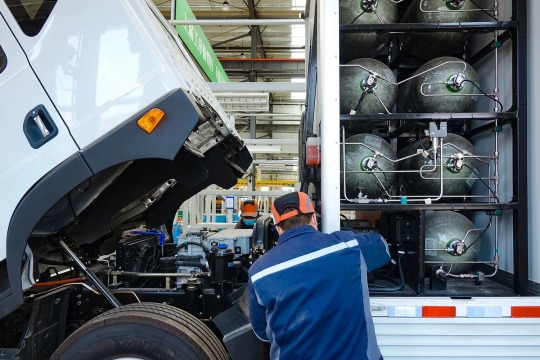
Employees work on the assembly line of fuel cell electric vehicles powered by hydrogen at a factory in Qingdao, Shandong province, China, on March 29, 2022. VCG Via Getty Images
As this brief tour suggests, there is every reason to fear that tens of billions of dollars in subsidies, vast amounts of political capital, and precious time are being invested in “green” energy investments, the main attraction of which is that they minimize change and perpetuate as far as possible the existing patterns of the hydrocarbon energy system. This is not greenwashing in the simple sense of rebadging or mislabeling. If carried through, it is far more substantial than that. It will build ships and put pipes in the ground. It will consume huge amounts of desperately scarce green electricity. And this faces us with a dilemma.
In confronting the challenge of the energy transition, we need a bias for action. We need to experiment. There is every reason to trust in learning-curve effects. Electrolyzers, for instance, will get more affordable, reducing the costs of hydrogen production. At certain times and in certain places, green power may well become so abundant that pouring it into electrolysis makes sense. And even if many hydrogen projects do not succeed, that may be a risk worth taking. We will likely learn new techniques in the process. In facing the uncertainties of the energy transition, we need to cultivate a tolerance for failure. Furthermore, even if hydrogen is a prime example of corporate log-rolling, we should presumably welcome the broadening of the green coalition to include powerful fossil fuel interests.
The real and inescapable tradeoff arises when we commit scarce resources—both real and political—to the hydrogen dream. The limits of public tolerance for the costs of the energy transition are already abundantly apparent, in Asia and Europe as well as in the United States. Pumping money into subsidies that generate huge economies of scale and cost reductions is one thing. Wasting money on lame-duck projects with little prospect of success is quite another. What is at stake is ultimately the legitimacy of the energy transition as such.
In the end, there is no patented method distinguishing self-serving hype from real opportunity. There is no alternative but to subject competing claims to intense public, scientific, and technical scrutiny. And if the ship has already sailed and subsidies are already on the table, then retrospective cost-benefit assessment is called for.
Ideally, the approach should be piecemeal and stepwise, and in this regard the crucial thing to note about hydrogen is that to regard it as a futuristic fantasy is itself misguided. We already live in a hydrogen-based world. Two key sectors of modern industry could not operate without it. Oil refining relies on hydrogen, as does the production of fertilizer by the Haber-Bosch process on which we depend for roughly half of our food production. These two sectors generate the bulk of the demand for the masses of hydrogen we currently consume.
We may not need 600 million, 500 million, or even 300 million tons of green and blue hydrogen by 2050. But we currently use about 100 million, and of that total, barely 1 million is clean. It is around that core that hydrogen experimentation should be concentrated, in places where an infrastructure already exists. This is challenging because transporting hydrogen is expensive, and many of the current points of use of hydrogen, notably in Europe, are not awash in cheap green power. But there are two places where the conditions for experimentation within the existing hydrogen economy seem most propitious.
One is China, and specifically northern China and Inner Mongolia, where China currently concentrates a large part of its immense production of fertilizer, cement, and much of its steel industry. China is leading the world in the installation of solar and wind power and is pioneering ultra-high-voltage transmission. Unlike Japan and South Korea, China has shown no particular enthusiasm for hydrogen. It is placing the biggest bet in the world on the more direct route to electrification by way of renewable generation and batteries. But China is already the largest and lowest-cost producer of electrolysis equipment. In 2022, China launched a modestly proportioned hydrogen strategy. In cooperation with the United Nations it has initiated an experiment with green fertilizer production, and who would bet against its chances of establishing a large-scale hydrogen energy system?
The other key player is the United States. After years of delay, the U.S. lags far behind in photovoltaics batteries, and offshore wind. But in hydrogen, and specifically in the adjoining states of Texas and Louisiana on the Gulf of Mexico, it has obvious advantages over any other location in the West. The United States is home to a giant petrochemicals complex. It is the only Western economy that can compete with India and China in fertilizer production. In Texas, there are actually more than 2500 kilometers of hardened hydrogen pipelines. And insofar as players like Exxon have a green energy strategy, it is carbon sequestration, which will be the technology needed for blue hydrogen production.
It is not by accident that America’s signature climate legislation, the Inflation Reduction Act, targeted its most generous subsidies—the most generous ever offered for green energy in the United States—on hydrogen production. The hydrogen lobby is hard at work, and it has turned Texas into the lowest-cost site for H2 production in the Western world. It is not a model one would want to see emulated anywhere else, but it may serve as a technology incubator that charts what is viable and what is not.
There is very good reason to suspect the motives of every player in the energy transition. Distinguishing true innovation from self-serving conservatism is going to be a key challenge in the new era in which we have to pick winners. We need to develop a culture of vigilance. But there are also good reasons to expect certain key features of the new to grow out of the old. Innovation is miraculous but it rarely falls like mana from heaven. As Sabel and Victor argue in their book, it grows from within expert technical communities with powerful vested interests in change. The petrochemical complex of the Gulf of Mexico may seem an unlikely venue for the birth of a green new future, but it is only logical that the test of whether the hydrogen economy is a real possibility will be run at the heart of the existing hydrocarbon economy.
— Adam Tooze is a Columnist at Foreign Policy and a History Professor and the Director of the European Institute at Columbia University. He is the Author of Chartbook, a newsletter on Rconomics, Geopolitics, and History.
#Hydrogen#Battery-Powered Electric Vehicles (EVs)#Chuck Sabel | David Victor#Iberdrola Puertollano Spain 🇪🇸#Green Hydrogen#Hydrogen Council of the United States 🇺🇸#Hydrogen Economy#Airbus | Aramco | BMW | Daimler Truck | Honda | Toyota | Hyundai | Siemens | Shell | Microsoft#Japan 🇯🇵 | South Korea 🇰🇷 | EU 🇪🇺 | UK 🇬🇧 | US 🇺🇸 | China 🇨🇳#Portugal 🇵🇹 | Germany 🇩🇪 | Namibia 🇳🇦#European-African Cooperation
2 notes
·
View notes
Text

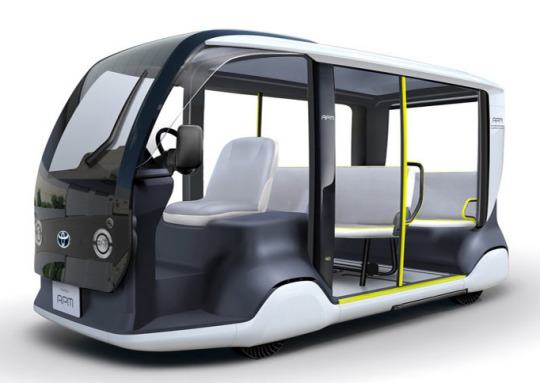


Toyota APM 2020/2023. Some of the Accessible People Movers that were originally designed for the (delayed) 2020 Tokyo Olympic Games have been repurposed and transformed into cat buses for the Expo Aichi Memorial Park in the Japanese city of Nagakute. The cat buses have been designed to resemble the cat character from the 1988 Studio Ghibli animated film My Neighbour Tortoro. The APM is fully electric with a range of 100km and a top speed of 20km/h (12 mph). There were around 200 APMs made for the Olympics, it’s unclear how many have been turned into cats
#Toyota#Toyota APM#Toyota Accessible People Mover#people mover#2020 Tokyo Olympics#cat bus#low speed#EV#electric vehicle#2023#Expo Aichi Memorial Park#my neighbour totoro#cats
439 notes
·
View notes
Text
2025 Hyundai Santa Fe XRT, 2025 Toyota 4Runner: 2 Great Ways to Get Dirty
Off-road vehicles are rolling off assembly lines in record numbers, and this week, we take long looks at two of the top new entrants in the high-stakes segment. The 2025 Hyundai Santa Fe XRT 2.5T AWD was a finalist in the North American Utility of the Year competition, and Host Jack Nerad took a long second look at it this week. Powered by a robust 2.5-liter turbocharged four-cylinder engine…
#automotive#electric vehicles#EV Tax Credits#General Motors#Hyundai#Mazda#NACTOY#North American Utility of the Year#Scout#Stellantis#Tariffs#toyota
0 notes
Text
🚗💥 Gran Turismo 7 Update 1.55 has launched, bringing new cars and thrilling AI action! With the iconic Honda Civic Si Extra and the futuristic Hyundai IONIQ 5 N added to your garage, plus exciting new events to race in, there's never been a better time to jump in! 🏎️✨
#Gran Turismo 7#GT7 Update#Update 155#New Cars#AI Enhancements#Gran Turismo Sophy#Racing Game#Racing Fans#Formula Cars#Honda Civic#Hyundai IONIQ 5#Toyota C-HR#World Circuits#Game Updates#Scapes#Racing Events#Powerful Engines#Electric Vehicles#Classic Cars#Track Challenge#Driving Skills#Café Menu#Chromatic Drive#PlayStation Games#Racing Community#Gran Turismo Series#Driving Experience#Car Collecting#Video Game Updates#Simulation Gaming
1 note
·
View note